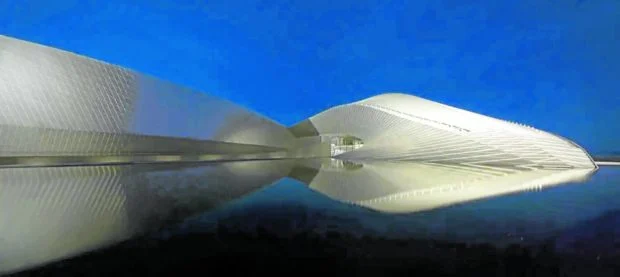
I have yet to meet someone who doesn’t enjoy and appreciate architecture.
During travels, and even more so when overseas, the diversity of design invites us to click, click, click away at the uniqueness of all the new structures we encounter and experience. With handy and sophisticated smartphones, it isn’t difficult to capture the beauty of the built environment and freeze them into images we can look back to with delight.
While DSLR cameras are technically more advanced and are still the desired gadgets for professional photography, today’s smartphones have camera features that allow us to select depth of field and exposure, providing high quality images without the complications of a professional camera.

So, how does one photograph architecture? First and foremost, with an eye that looks out for dynamic volumes, arresting lines, symmetry, textural planes, rhythm, and extraordinary light. A remarkable structure can be made even more extraordinary when captured from a particular angle or vantage point during a specific time of day. Here are some insights to capturing that frame.
Firstly, decide on your focal point. There is always that subject of interest, that element that drew your eyes to look in the first place. This could be a design feature, a burst of light, texture or color, or an overall compelling element of a structure.
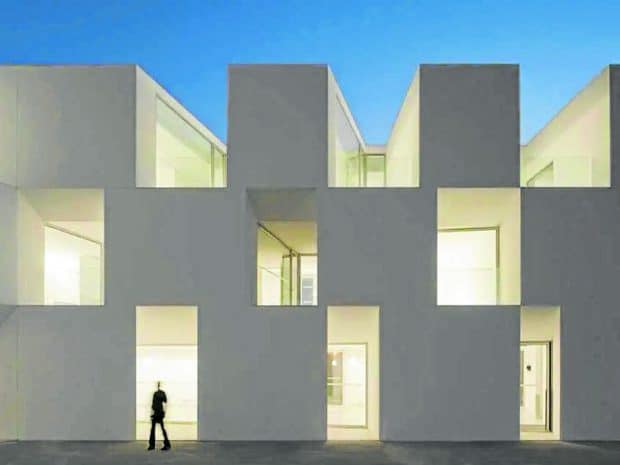
Follow the classical “rule of thirds” in composing the frame. Your smartphone has the feature to show this grid on its screen. Here, the image frame is sectioned into thirds horizontally and vertically where you can locate the focal subject on either the right or left one-third of the composition. This positioning will naturally capture and draw the viewer’s eyes toward the focal point and works exceptionally well for subjects that are asymmetrical.
For symmetrical structures, a balanced composition is the most effective—a one-point perspective, so to speak. If the foreground is of design significance, like a beautifully patterned floor, play around with the height of the camera to fill the frame with as much of the foreground, in which case your focal point can be one-third from the top of your frame, or one-third from the bottom if the preference is to lessen the floor and emphasize the upper features.
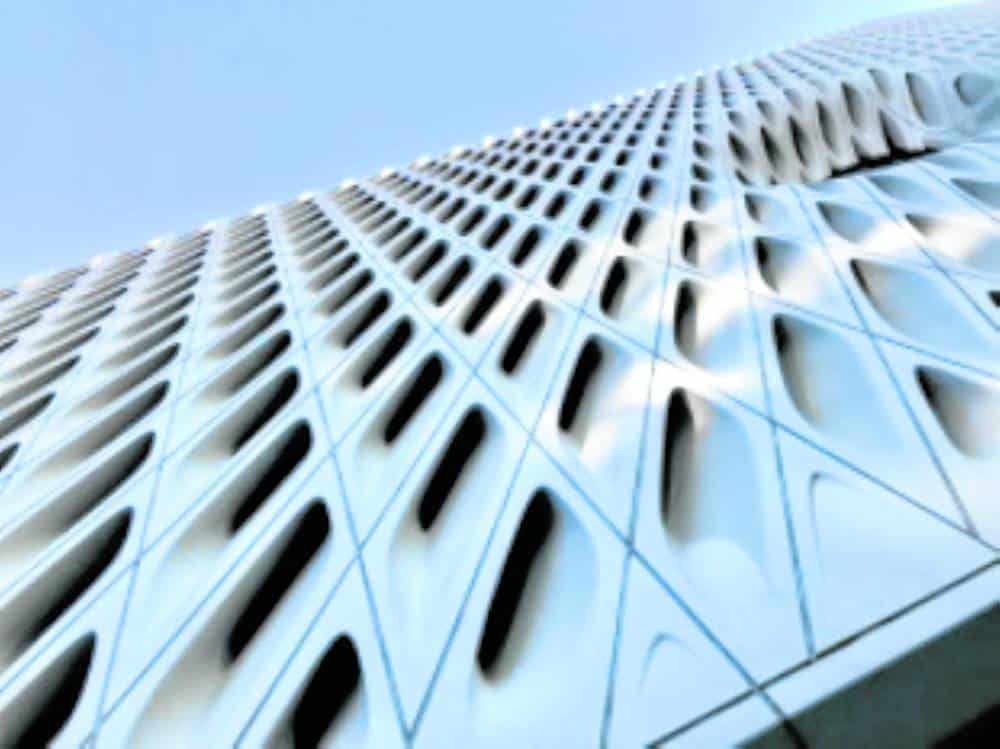
If you have the flexibility of time, take photos during the time of day that best enhances the design features of the building. For example, structures with interlocking volumes or heavy texturing are best photographed against strong lighting—around 11 a.m. to 2 p.m. Sharp lighting creates highlights and shadows that define these volumes and textures.
Structures with glazing are best photographed at sundown when the sky’s colors can add an unusual character to the structure, with the colors of sunset reflecting on its skin.
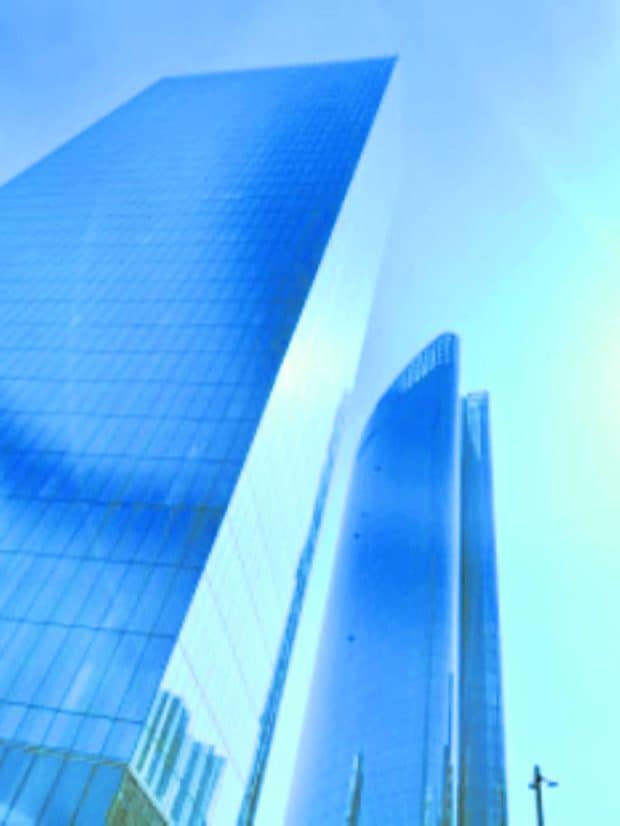
Alternatively, when photographed in the middle of the day, glass reflects the strong blue of the sky. The outcome is stately and elegant. Early morning or late-in-the-day twilight or “blue hour” moments are the best for capturing buildings with extraordinary lighting design. The deep blue skies allow for a building outline to still be appreciated while its other planes are enhanced by artificial lighting. The result is a tranquil and dramatic capture.
When photographing a structure without people, its scale and size can be vague. Including people in the distant background of your frame will provide scale to the structure and relate it to human activity, making it visually measurable. It also makes the image more relatable. Avoid positioning people in the foreground of the frame as it can be quite distracting.

Zoom in to showcase details and to give emphasis to the features which, from a distance, appear to be texture, but up close are the interesting attributes of the architecture. Here is where you will understand how scale in design come into play, where a design feature can provide a different experience depending on the distance from which it is viewed.
The true enjoyment of capturing photos is not in the end-product image that can be kept forever. Much more than that, it is in the experience of framing and composing architecture—those moments when a photographer understands a structure’s story, deconstruct its narrative, and discover its relationship to the humans for whom it is built to serve.
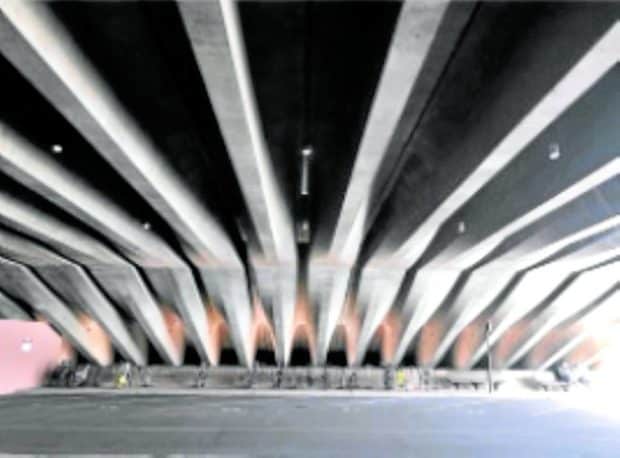
Architecture is best experienced before that moment when it is clicked and frozen in time.
If you like this article, share it on social media by clicking any of the icons below.
Or in case you haven’t subscribed yet to our newsletter, please click SUBSCRIBE so you won’t miss the daily real estate news updates delivered right to your Inbox.
The article was originally published in Inquirer.NET and written by Ar. Isabel Berenguer- Asuncion.







More Stories
Weekend wanderer: This walk in Manila is a trip to art and to our past
Enjoy no-frills camping in the great outdoors in Tanay
Landco Pacific raises the bar for premium resort and leisure living